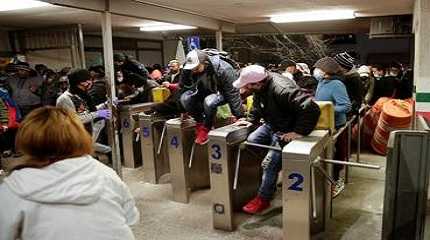
March 29 (Reuters) - The number of people crossing the Darien Gap, one of the most dangerous and impassable regions of Latin America, has almost tripled compared to the same period last year, the United Nations Refugee Agency (UNHCR) said on Tuesday.
The Darien Gap, a lawless stretch of mountainous jungle 160 km (100 miles) long and 50 km (30 miles) wide between Colombia and Panama, is one of the main routes taken by migrants and refugees trying to head north to the United States.
According to statistics from Panamanian authorities, the number of Venezuelans crossing the Darien Gap in the first two months of 2022, approximately 2,500 people, has almost reached the entire total for 2021, which saw 2,819 Venezuelans.
The total number of those crossing went from 2,928 in the first two months of 2021 to 8,456 in the same period of 2022, including 1,367 girls, boys and adolescents, UNHCR said.
"Many of those who make the crossing – usually young adults and families – arrive in remote indigenous communities, hungry, dehydrated, exhausted and in need of medical attention," the UNHCR said in a statement. It added that migrants must tackle natural hazards as well as criminal groups known for acts of violence, including sexual abuse and robbery.
Refugees and migrants of various nationalities have been crossing the Darien Gap for years, but 2021 marked record numbers.
Some 133,000 people made the journey in 2021 - the large majority from Haiti - including their children born in Chile and Brazil, followed by Cubans, Venezuelans and those from outside Latin America from places like Angola, Bangladesh, Ghana, Uzbekistan and Senegal. The majority were on the move due to the socio-economic impacts of the COVID-19 pandemic.
In 2021 alone, at least 51 people who entered the Darien Gap were reported missing or dead, the UNHCR said. It added that while many of the Venezuelans who are crossing had previously been living in other host countries in South America, an increasing number are now leaving directly from Venezuela.




